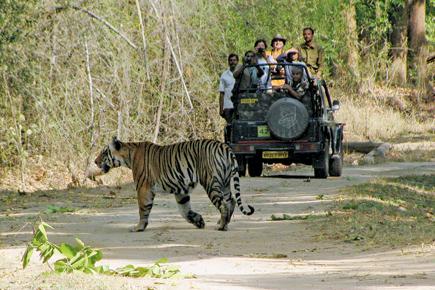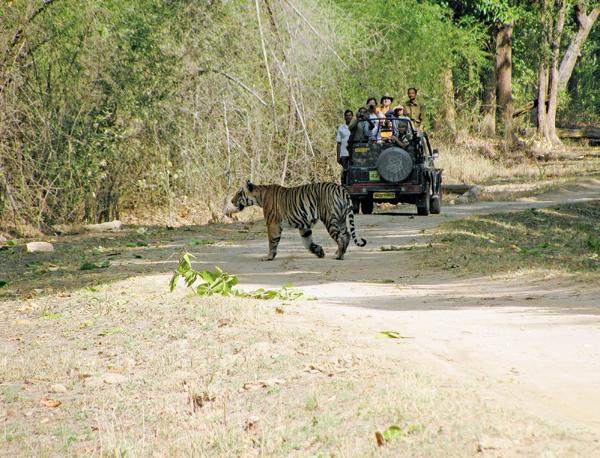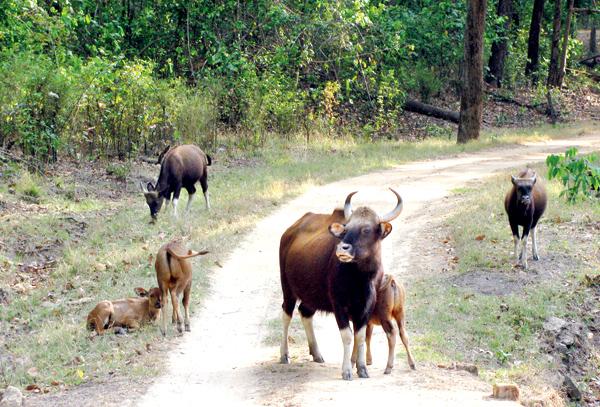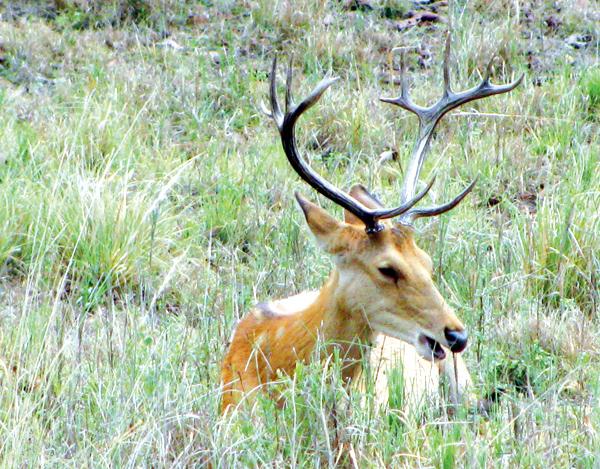Not one or two, but three tiger sightings, prepped by fabulous displays of its abundant wildlife, Kanha, which was thesetting for Rudyard Kipling’s beloved tale, The Jungle Book, is a must-visit for the nature buff

Royal Bengal Tiger
The first of our five safaris in Kanha was in the evening. Unexpected rains in the afternoon had dulled our expectations. However, we were lucky with a few memorable sightings before the day ended. It began with a Jungle Fox, barely into the Kanha zone. It posed nonchalantly, as we went trigger-happy.

Kanha offers great sighting options of the Royal Bengal Tiger from close range. Pic courtesy/Travel with a couple
Jungle jive
Earlier that day, we had landed in Kanha National Park, which is divided into four zones — Kanha, Kisli, Mukki, and Sarhi. Each has its unique topography, and hence, some specific species are found in abundance in each zone. We entered the park from Khatia gate and headed for the Kanha zone, for which we had to pass through the Kisli zone. Kanha zone, considered the premium zone, is of mixed forest types — sal and bamboo trees, grasslands, and several waterbodies.
After the fox, we spotted a herd of Barasinghas (hard-ground swamp deers). These handsome animals with wooly hair and 12-point antlers were once at the brink of extinction. Their resurgence is a great success story in wildlife conservation. The meadows of Kanha zone offer more chances of tiger sightings, so we were hopeful.

The Indian Gaur feeds its calf along a trail
It began to rain again but luckily, stopped soon. By now, we had reached Shravan Tal, one of the important points in the Kanha zone. We waited at the water body for a while, soaking in the landscape as we scanned the area for animals. A Sloth Bear passed by but didn’t bother with a photo-op. After watching a herd of Indian gaurs hobnob with a few mynahs, we were about to call it a day when we spotted a couple of these vehicles ahead, as people pointed in one direction. We joined the group only to spot the Royal Bengal Tiger as it rested in the grass, unmindful of the buzz being generated around.

The Barasingha has 12 antlers, hence the name
Tiger, tiger...
The next morning’s safari was to Kisli zone. With a similar landscape as the Kanha zone, we had a clear sighting of tiger here. It was about to cross the trail in front of us when a forest official walked towards it. Sensing the tiger’s hesitation, the Gypsy in front of us went ahead and warned the person. The tiger waited, and crossed our trail. Guides were sure that it would cross the trail again at another point, so we headed there and waited. We spotted the tiger as it approached us. But as the number of Gypsies increased, it remained in the thicket. We waited for nearly 20 minutes, as it cleaned its face. We moved on, hoping to see more of wild denizens.
We spotted a Grey Nightjar, Indian Rollers, Spotted Deer, Sambhars, and a cluster of Lemon Emigrant Butterflies. Our evening safari was also to Kisli zone. More wildlife was on view as we saw Peacocks, Green Bee-Eaters, Spotted Deer, Barasinghas, Indian Rollers, Wooly Necked Storks, and White-Rumped Vultures.
Wild wonderland
On day three, we spotted a tiger again, on the morning safari to Kanha zone. Well-camouflaged, it was seated at the edge of a stream, sipping water. We also sighted many birds. While on the safari, visit the Kanha museum, near the entrance of Kisli Gate. It is a part of the safari, as it is inside the park. Many skip it as it eats into the safari time. Yet, it’s time well-spent. It showcases a good collection of exhibits related to the forest’s ecosystem and a light-and-sound show to get a feel of the forest at night.
The last safari was to Mukki zone. One of the highlights was the Barking Deer. The small, shy animal was drinking water from a lake, and the as soon as it sensed us around, it darted at high speed and didn’t stop until it felt it had gained a safe distance from us. Another sight was an Indian Gaur feeding its calf in the middle of the trail. We had to wait till the mother-kid duo moved away. It was more lush compared to Kanha and Kisli zones.
On the last day of our trip, we went for a short birding trail in the morning where we spotted the Oriental White Eye, Large Cuckoo Shrike, Racket-Tailed Drongo, Oriental Magpie Robin and Chestnut-Bellied Nuthatch .
 Subscribe today by clicking the link and stay updated with the latest news!" Click here!
Subscribe today by clicking the link and stay updated with the latest news!" Click here!









